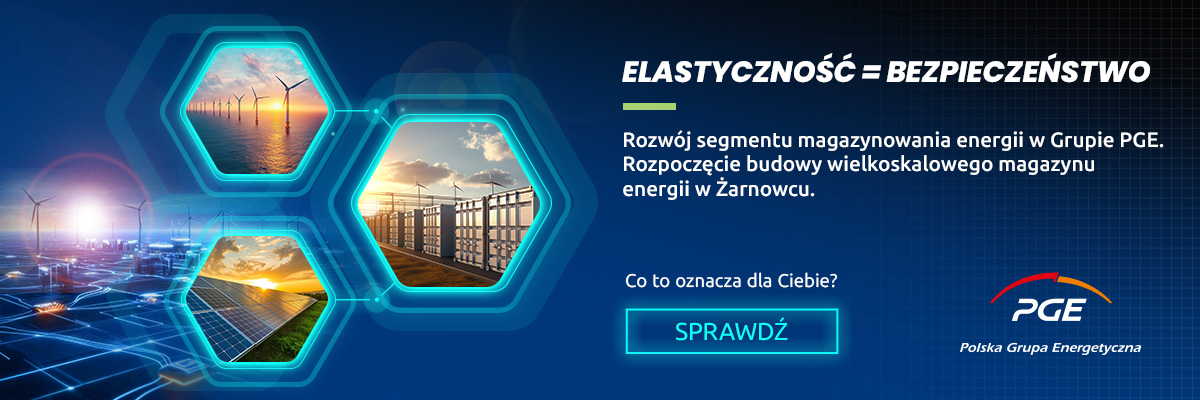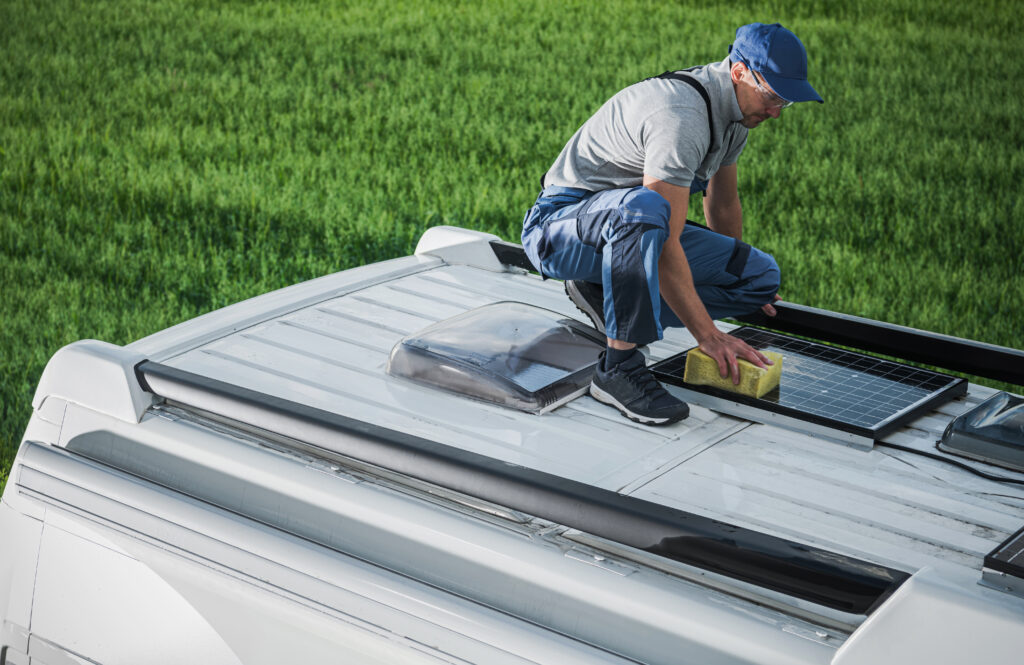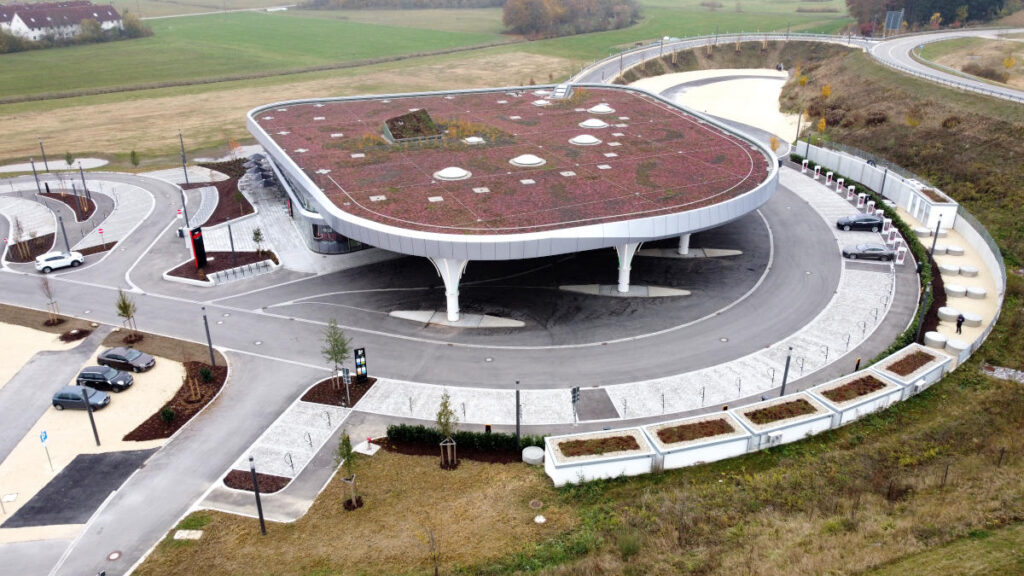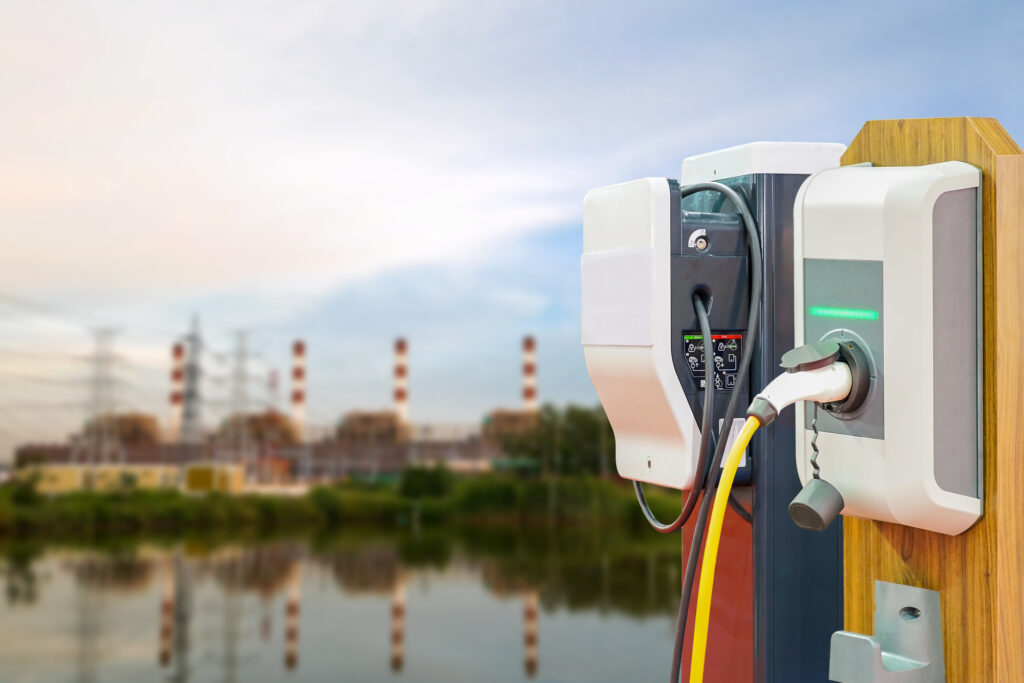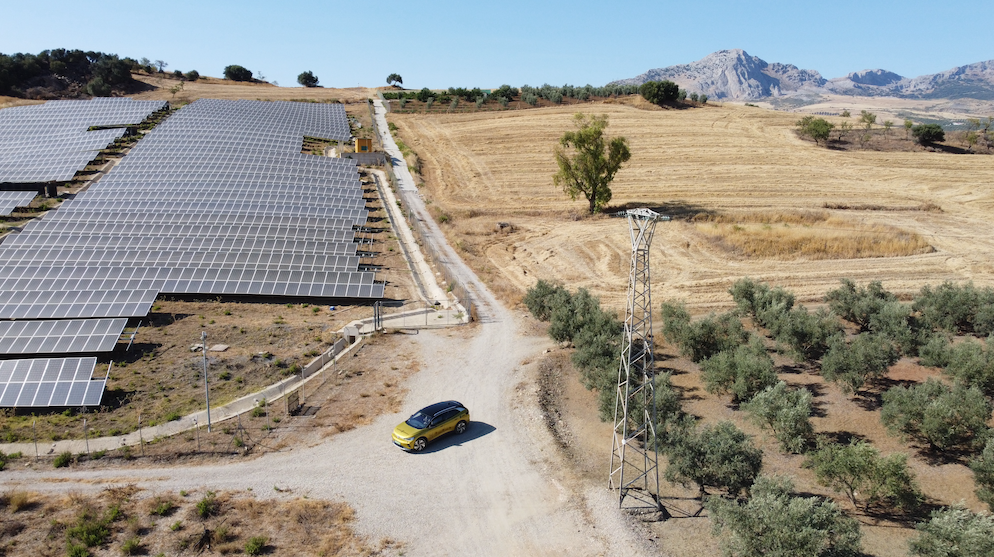Spis treści
Electric semi trucks and Tesla’s Cybertruck especially spark people’s imagination, and you can find countless iterations of how they could be converted into camping vehicles. What I’m planning to do below is run you through my personal selection of what’s noteworthy, existing, conceptual, or rendered, and later name a few obstacles we’re obviously facing with electric campers — together with some solutions. Let the journey begin.
Iridium E-Mobil Motorhome
I’m starting with the obvious — Iridium. Obvious because it seems to me the one and only, and first, and really 100% electric motorhome. It has all it takes to be called a self-contained motorhome — toilet, shower, kitchen, double bed and swivel chairs. What makes it special is its fully electric drive and a range that is advertised at 249 miles. An unfortunate note for Americans, Iridium will only sell in Europe. With our density of attractions, it will do just fine (if proved real).
Nissan e-NV200 pop-top
One of the first ever EVs I saw and tested were Nissans — Leaf and e-NV200 in its commercial edition. The sentiment is still there. I also keep watching how the Nissan Voltia concept is growing, and now I’m thrilled to see the camper version — just perfect for a back-packer style trip. The range of 124 miles may not sound impressive but the idea of camping is to take things easy and chill out. There’s no rush in the end, is there? Seeing the popularity of winter camping, Nissan did its homework and upgraded the basic camper concept with off-road solutions for their latest version, which is still officially a “concept”.
Volkswagen ID Buzz
Everybody has been talking and writing about it for years. It has divided T1 lovers as deep as the Grand Canyon. I’m personally not a great fan, but I’m old and when the car finally launches it will be for an entirely different public, considering the pace of its development.
It still deserves a place on the list for its promise of a bright camper future.
Stella Vita Solar Electric Camper
This beauty has already been covered on CleanTechnica and described in detail. Of course, I love the idea of this solar-powered camper designed and built by a team of Dutch students. Their focus on energy efficiency means the shape of the car allows super aerodynamics, its roof holds plenty of solar panels (plus some extra when you are parked), and it offers living space after the roof is lifted. What a concept!
Converted Electric Camper Vans
This is an open category of all possible van conversions — the Fiat e-Ducato, the Mercedes e-Sprinter, the smaller Peugeot e-Traveller, LEVC VN5, you name it. Looking at the limited selection we actually have with electric motorhomes and campers, I see the greatest potential in van conversions. These vehicles are currently selling or will soon start selling. They are already made well for commercial applications, and van conversion has always been a huge and separate caravanning family, so no need to reinvent anything (almost). Mercedes is actually developing its camper van version of the e-Sprinter as market interest is growing and RV lovers are getting impatient. All you need to do is get one and build your camper interior on your own (or better hire someone who knows this business).
That’s it, readers. No more from me in that department. Don’t be upset I’m not putting the Rivian, Cybertruck, or many wonderful renders of electric campers here. There are too many and I’m a bit more down to earth. The time has come to discuss what’s stopping the electric revolution in motorhomes and what can possibly be done about it.
Obstacles & Solutions for Electric Campers
1. Weight, idiot.
This is probably what each electric motorhome designer keeps saying to themselves. No secret that the bloody battery all the EV world relies on is awfully heavy. Of course, I appreciate the way it weighs on the Tesla floor to offer the go-cart feeling when driving. In motorhomes, however, weight is a very sensitive matter, not only in electric models. The thing to remember is that your regular B class driver license lets you drive vehicles up to a gross weight of 3,500 kg. Even with regular motorhomes, it is quite often a challenge and manufacturers keep looking for ways to reduce the vehicle’s weight to leave more space to users. And camper lovers like to take a lot of stuff — bikes, coffee machines, barbecues, beach chairs. … What quite often happens is you exceed the permissible 3,5000 kg and get fined on your way to freedom and independence.
Solution: Get a C class driver license. That truly solves the problem but can’t be expected from everybody. Anybody who dreams of shaking up the market of electric campers will need to solve this equation with even more lightweight builds of the interior. Anything will matter — the size of water tanks, gas cylinder for cooking and heating, plastic utensils instead of glass or metal, and most importantly better and better battery density. Innovation in batteries could be a game changer for the electric motorhome market. I truly believe it will come.
2. Range
Together with the limitations of weight comes the limitation of battery size and consequently limited range. We have seen anything from 130 miles to 250 miles in the examples above as promised range, meaning the real-life for a fully loaded motorhome may be considerably less. I have been part of the EV range anxiety discussion for way too long to worry about it.
Solution: The question to ask is: what’s the hurry? Camperlife is about going slow, going easy, taking your time, and enjoying the peace and freedom. What’s the rush? Yes, you will need to plan your journey a bit more carefully, you will have to stop to recharge from time to time to cover longer distances, but at the same time you will charge as usual during all your plugged-in nights, as you normally do on campsites. You will charge when driving down from Dalsnibba Mountain in Norway (or any other mountain as a matter of fact). You will also be able to use the huge EV battery bank to live in the wild for weeks without the need to charge — as you normally would need to in a regular camper where 3–4 days in remote seclusion would be all you can afford. You only need to leave enough to get to the nearest socket. Range anxiety? Come off it!
3. Carbon footprint
We all know that EVs are better than fossil fuel vehicles even in Poland where you often charge from coal-powered plants. Also, they are better in the long run — the more mileage, the quicker they achieve their environmental advantage over diesel and petrol vehicles — and many motorhomes do 5,000 miles per year on average. So, as long as you can be satisfied with generating no tailpipe emissions, your overall lifecycle balance sucks.
Solution: Use it more. Offer it to friends and family. Drive it when you’d normally drive your regular car (applies especially to the smaller models of camper vans). Share it like we tend to share everything today by using platforms such as Camptoo to rent out your motorhome like a house or apartment on Airbnb.
4. Cost
Electric motorhomes are where EVs were 4–5 years ago — way more expensive than their diesel counterparts. While EVs are slowly getting even with ICE vehicles in passenger models, the price challenge for motorhomes may stay with us for a while. Remembering that motorhomes are expensive in general, going electric may be the no-go barrier for many.
Solution: Get rich. I wish I had more to say here, but I’ve been saving for my own motorhome for a while now and whenever I get close, the prices rocket again (2020 and 2021 were particularly painful). It’s not easy unless you’re rich, which I hope you will be. In the meantime, rent one and keep your eyes open for electric models on the sharing platforms. They’re coming and you may find yourself testing an Iridium sooner than you think.
Or, if all else fails, maybe try building your own?
All in all, I still believe the dream I had long ago. I will go on a trip in an electric motorhome or camper and nothing will spoil the joy — nor range or cost. Looking at where the car market is heading in general, I’m sure the segment of campers will not be overlooked and companies will have to innovate and design to make it happen for all of us.
The text was also published on CleanTechnica.com
